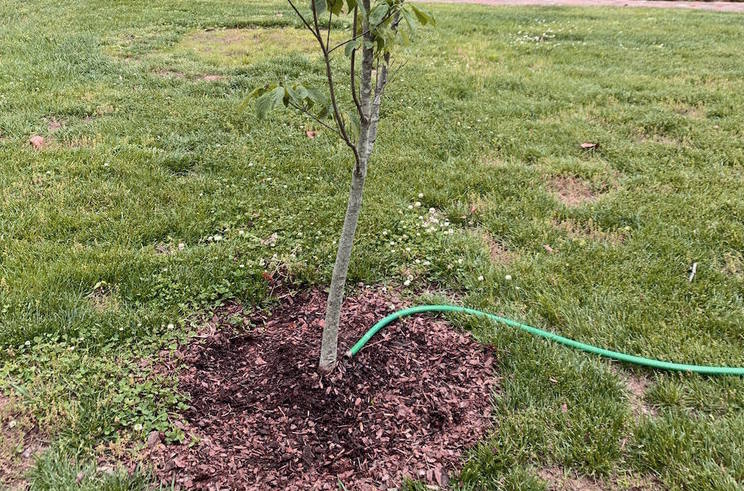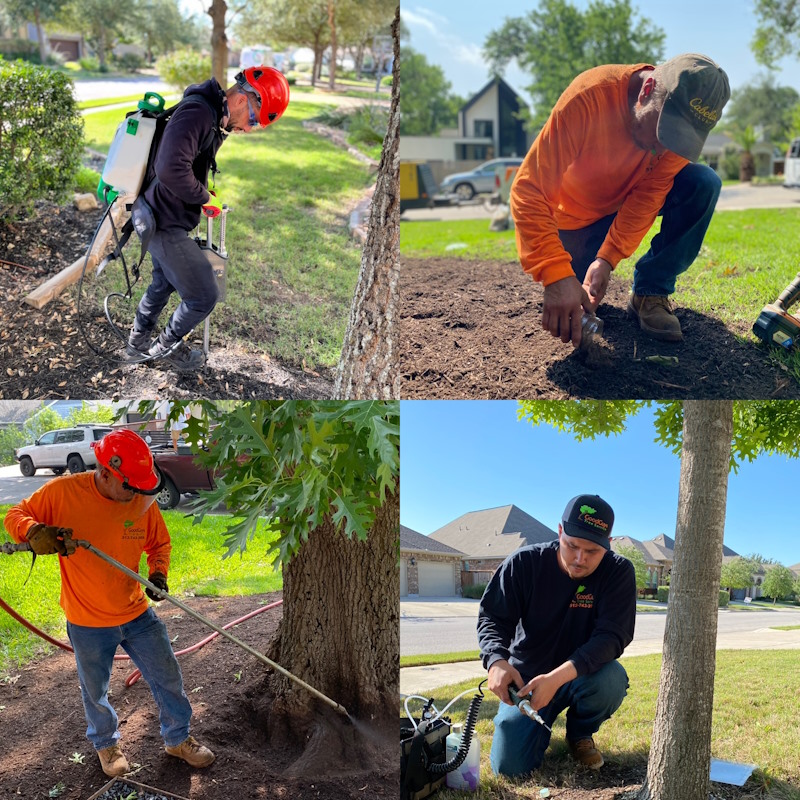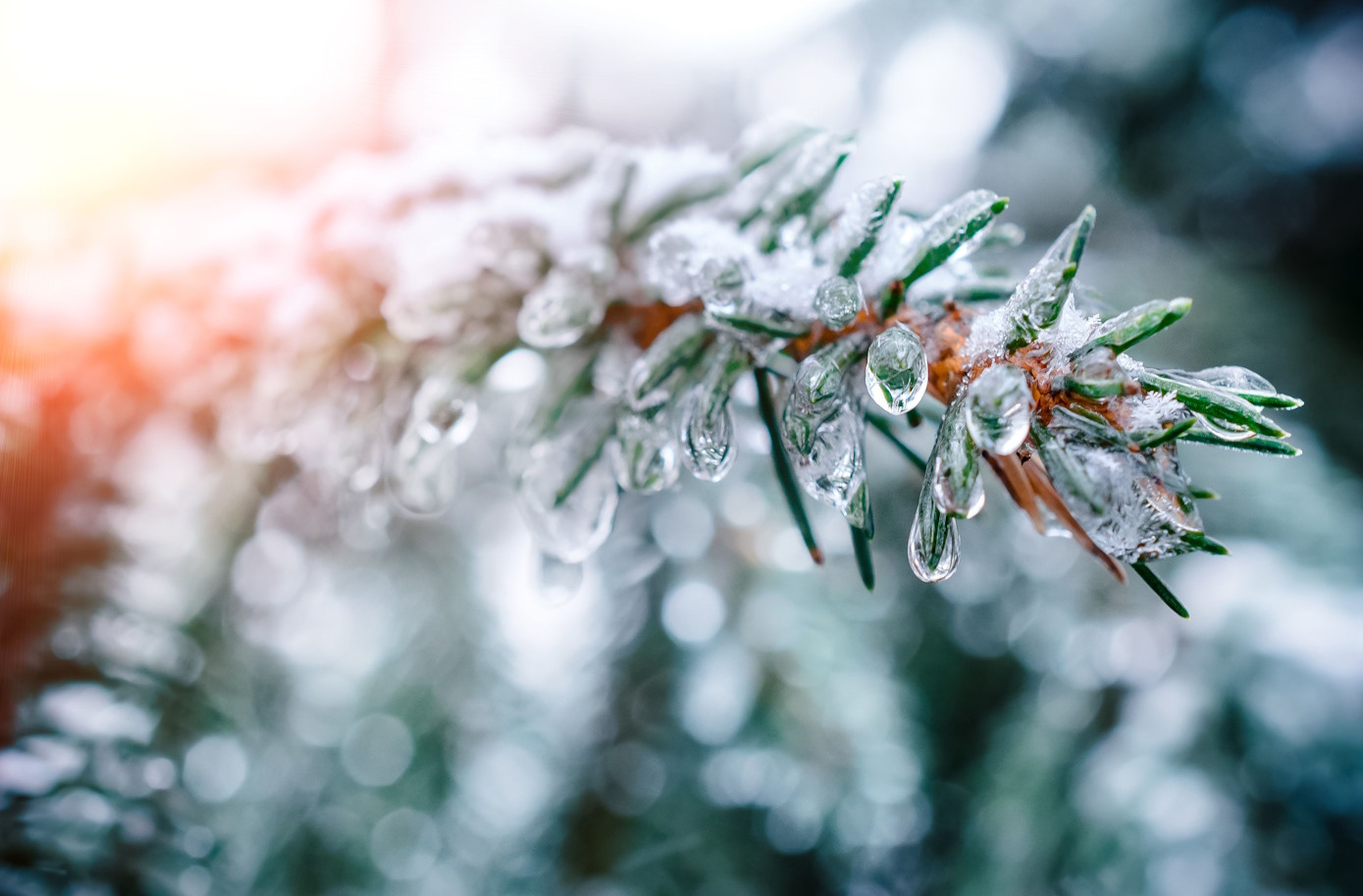It’s summertime in Central Texas! Like most years, we’re experiencing some incredible sunshine this summer season, with lots of long, hot days without much rainfall.
As the temperatures continue to soar, it’s important to remember to stay well hydrated and avoid the hottest periods of the day when possible.
While it’s easy enough for people to escape extreme conditions, our trees aren’t so lucky. They’re facing the full force of the Texas summer, with long periods of extreme heat and drought causing heat stress.
A major problem for our native trees, heat stress can seriously inhibit growth during summer. In fact, many of our trees wither and die from heat stress unless we step in and help.
What Causes Heat Stress in Trees?
Prolonged periods of drought are the main cause of heat stress in trees here in Central Texas.
Our summers are hot and dry, with little to no rainfall for weeks or even months at a time. Because there’s not much rain, our trees struggle to absorb moisture that they normally get from the soil and air.
The trees continue to use water but cannot replace it quickly enough because there’s not enough moisture in the ground or air. Our hot and dry summers mean that many trees struggle to get the water they need.
Without enough water, trees struggle to maintain healthy levels of hydration, leading to various problems, including heat stress.
What Trees Suffer from Heat Stress?
Heat stress can affect all types of trees here in Central Texas.
Juvenile trees require more water than mature trees, so are the most susceptible to heat stress during droughts. Tree saplings planted within the past 2-3 years are the likeliest to show signs of heat stress, especially when there hasn’t been heavy rain for several weeks.
If untreated, heat stress can cause stunted growth in young trees has they lack enough water to create robust root systems.
While younger trees are most at risk, mature trees can also suffer from heat stress!
Even trees with years or decades of growth can suffer from heat stress. From large leafed species like bur oak to the massively popular live oak, our established trees are also vulnerable to heat stress during the hot, dry summers.
How to Spot Heat Stress in Your Trees
Spotting heat stress in trees is easy enough.
The first sign that your tree has heat stress is wilted leaves and branches. Wilting occurs because the trees are trying their best to preserve the low moisture levels during a drought.
Therefore, if you notice your tree has drooping leaves and branches during summer, chances are it’s due to heat stress.
Another common sign of heat stress in trees in Central Texas is discolored leaves. For example, yellowing on the interior leaves indicates heat stress, as can small brown spots across the leaves.
So, be sure to keep an eye out for these symptoms and act fast if you think your tree has heat stress.
The Importance of Watering Your Trees in Central Texas
It’s vital that you water trees during the hot, dry summers in Texas. Heat stress can cause major issues, from slow and stunted growth to killing the tree entirely.
While heat stress is a common problem for trees in Texas during summer, the issue is easy enough to fix!
Just like people, our trees require plenty of water during the extreme summers to ensure they remain hydrated and healthy.
Thankfully, watering your trees helps to prevent and reverse the effects of heat stress.
Mature trees typically need water every 2-3 weeks without heavy rainfall, although this can vary depending on the species. If it’s extremely hot and dry, you may need to water the tree every 1-2 weeks.
For juvenile trees, aim to water every week during the summer for the first 2-3 years of growth!
Be sure to check out our detailed guide for watering your trees throughout the year in Central Texas for more information! https://www.goodguystreeservice.com/a-guide-to-watering-trees-throughout-the-year-in-central-texas/
Are your trees showing signs of heat stress? Are you unsure how to properly water your trees during the summer months? Then get in touch with Good Guys Tree Service today!







